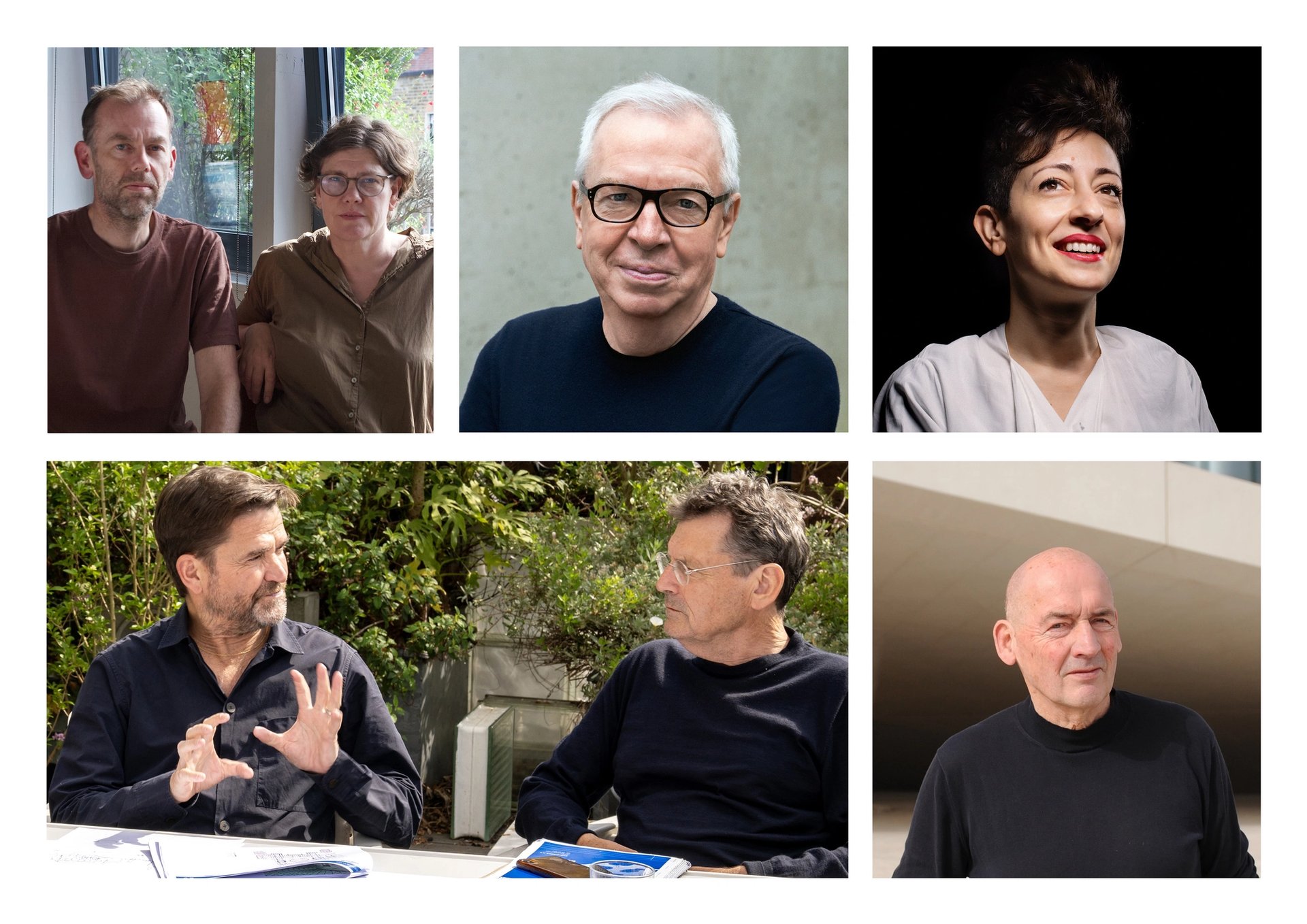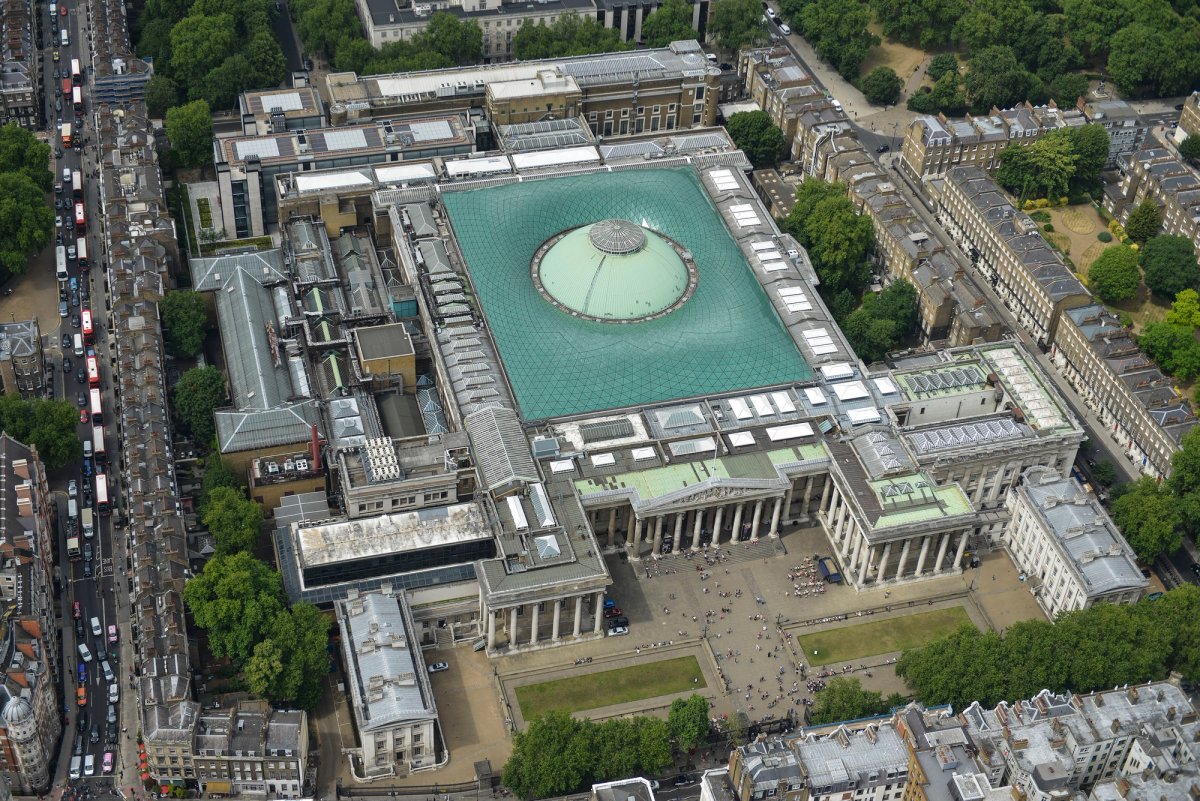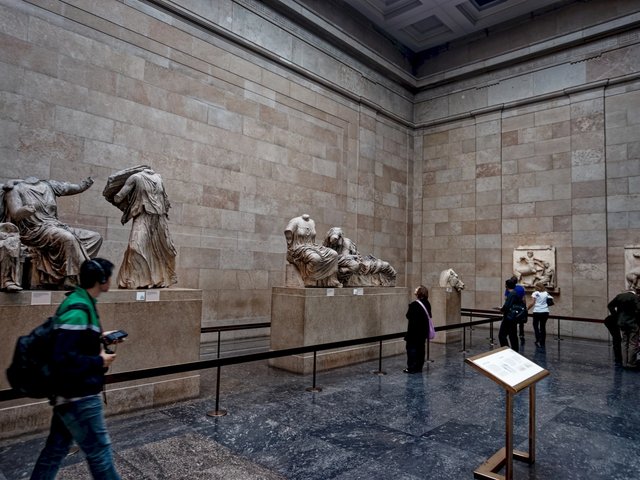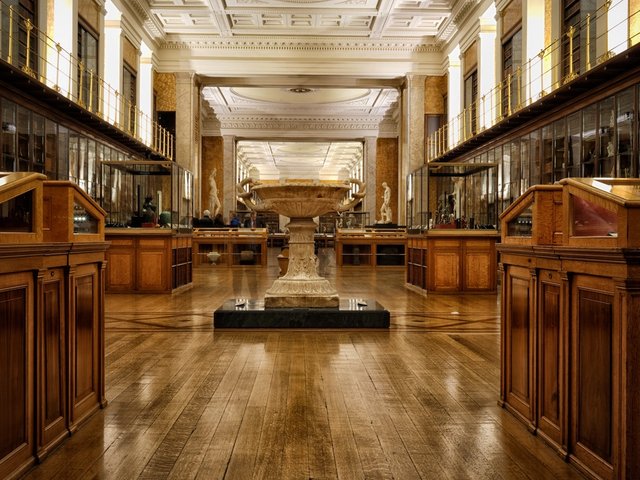A shortlist of five architect-led teams has been announced in the competition to lead the British Museum’s renovation of its Western Range galleries. The ambitious overhaul involves revamping more than a third of gallery space at the London institution.
The high-profile architect David Chipperfield—increasingly the architect of choice for museum chiefs—is on the list. He led an expansion of London’s Royal Academy of Arts that was completed in 2018 and designed a major addition to the Kunsthaus Zuricj in Switzerland, which was inaugurated in 2020.
Which architects have made the shortlist?
The Lebanese-born architect Lina Ghotmeh is also in the running. Her team includes the artist Ali Cherri who works with film, sculpture, installation, drawing, painting and other media to explore geopolitical and cultural histories. Ghotmeh designed the 2023 Serpentine Pavilion in London and has also been commissioned to design a contemporary art museum in the AlUla heritage region in northwestern Saudi Arabia.
There is a joint submission from Eric Parry Architects and Jamie Fobert Architects. Fobert is another architect experienced at museum projects; he was the lead architect for the major redevelopment of the National Portrait Gallery in London, which re-opened last year, and also doubled the exhibition space at Tate St Ives as part of an extension project at the Cornish space.
Another shortlisted candidate is the established practice OMA, co-founded by the Dutch architect Rem Koolhaas, which has completed a number of notable arts commissions including Aviva Studios-Factory International arts hub in Manchester, UK. OMA is also part of the team behind the new extension planned for the New Museum in New York.
Meanwhile 6a Architects, who transformed the non-profit gallery Raven Row in London’s east end and designed the expansion at the South London Gallery, is another contender.

Environmental campaigners previously called on prospective architects not to take part in the contest due to BP's involvement in the renovation
Western Range shortlisted candidates. Courtesy of the British Museum
How will the winner be decided?
The shortlisted candidates will take part in a series of “design exercises” at the British Museum to assess their concepts around exhibition design and working with the historic architecture. The entries will be displayed in the Round Reading Room from December; the winning entry is due to be announced early 2025.
A vast swathe of the British Museum’s display space—encompassing the “Western Range” which currently houses collections such as Ancient Egypt, Greece and Rome—is set to be redesigned under the revamp. The Western Range covers a third of the museum’s overall gallery space, as well as back-of-house areas, totalling 15,650 square metres.
The complex of spaces range in age from the original 1850s buildings designed by Robert Smirke, as well as later additions such as Gallery 10 and 22. “All of the buildings are in need of upgrade to meet contemporary building performance standards, and many contain highly significant heritage building fabric,” the museum says in a statement.
Applicants will be judged by a panel comprising ten members, chaired by George Osborne, the chair of the museum board and former member of parliament. Other panellists include the Irish architect Yvonne Farrell and Meneesha Kellay, senior curator, contemporary at the Victoria and Albert Museum. They will be joined by the British Museum’s former interim director Mark Jones and current director, Nicholas Cullinan.
Museum master plan
The Western Range overhaul is part of the wider museum masterplan which also includes a new museum Energy Centre, which will phase out the use of fossil fuels, replacing them with low-carbon technologies. This project—partly funded with government support—should save 1,700 tonnes a year of carbon dioxide, making the institution more sustainable. The museum also opened a new £64m storage and research facility in Berkshire earlier this year called BM_ARC.
The cost of the full masterplan project is likely to reach hundreds of millions of pounds, possibly more than a billion. In a controversial move, the oil and gas company BP is to give £50m over the next decade to help fund the redevelopment. In response to this, earlier this year environmental campaigners called on prospective architects not to take part in the contest.




